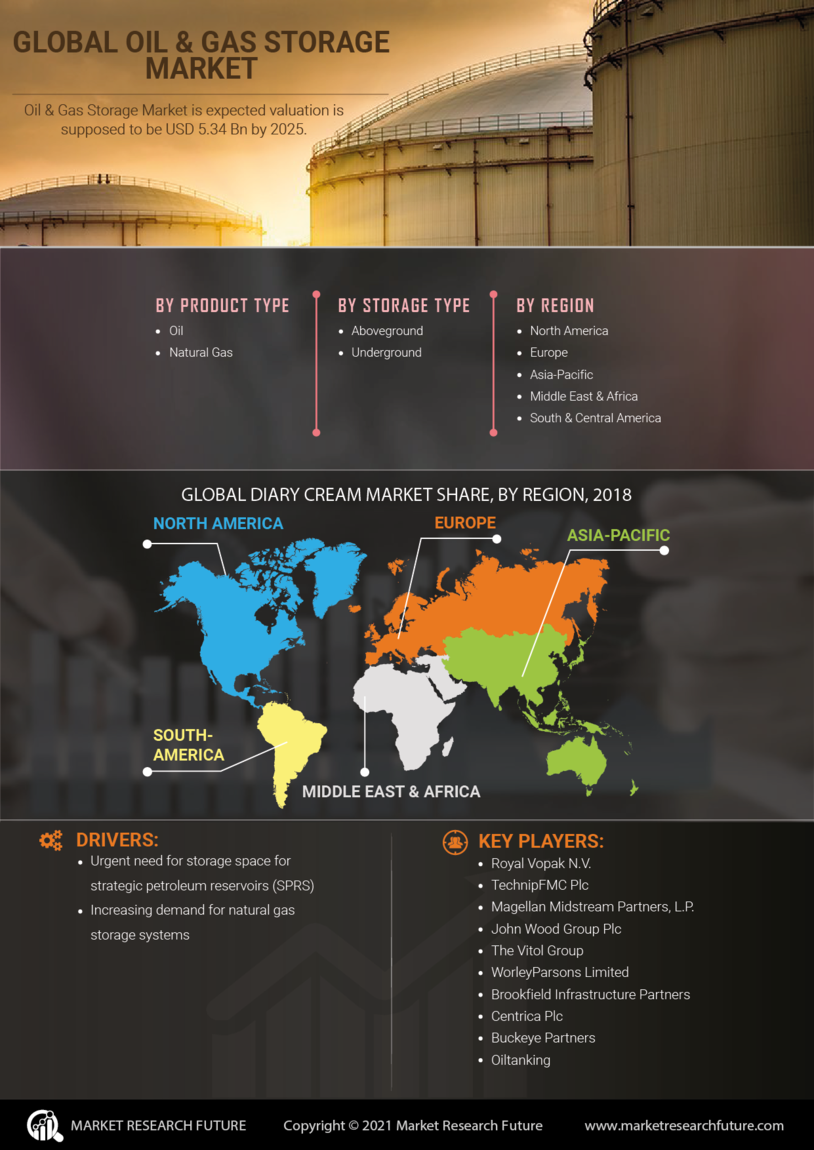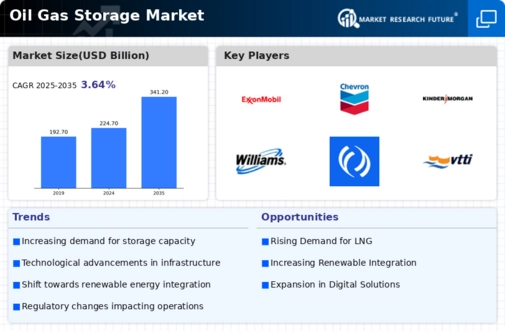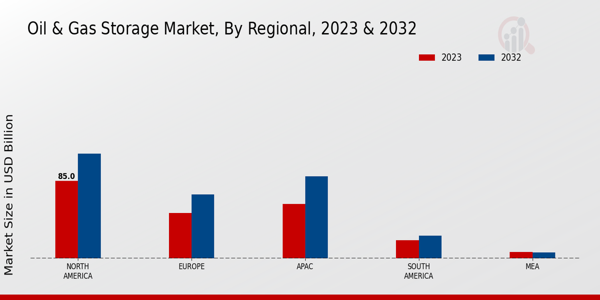The Oil Gas Storage Market is characterized by a complex interplay of supply and demand dynamics influenced by various geopolitical factors, regulatory frameworks, and technological advancements. Competitive insights into this market reveal that major players are focusing on enhancing their storage capacities, improving operational efficiencies, and adopting innovative technologies to optimize their services. The storage infrastructure is not only pivotal in balancing supply chains but also plays a critical role in mitigating the risks associated with market fluctuations and demand variability.
Increasing consumption patterns across emerging economies, coupled with the growing need for strategic reserves amidst geopolitical instabilities, have spurred significant investments in storage facilities, positioning companies within this landscape to adapt rapidly to changing market conditions.ExxonMobil maintains a robust presence in the Oil Gas Storage Market, leveraging its extensive operational capabilities and advanced technological expertise. The company operates an extensive network of storage terminals that cater to a diverse range of oil and gas products, allowing for effective management of inventories and seamless distribution.
ExxonMobil's strength lies in its operational efficiency and strategic location of storage facilities, which enhances the company’s ability to respond swiftly to regional market demands. This operational versatility aids ExxonMobil in maintaining a competitive edge, as it can adapt its storage strategies in alignment with market trends and customer requirements. Furthermore, ExxonMobil's commitment to sustainability and innovation positions favorably in a market increasingly driven by environmental considerations.Chevron enters the Oil Gas Storage Market with a strong portfolio focused on optimizing storage capacities through state-of-the-art technologies and strategic infrastructural investments.
The company's strength is evident in its ability to provide reliable storage solutions tailored to meet the demands of a fluctuating market. Chevron emphasizes maintaining high safety standards and regulatory compliance across its storage facilities, ensuring operational integrity and minimizing environmental impact. This commitment not only boosts Chevron’s reputation but also builds long-term relationships with stakeholders and customers. Additionally, Chevron's focus on expansion into key markets and collaboration with local entities further enhances its competitive positioning, enabling it to capitalize on emerging opportunities within the oil and gas storage sector.























Leave a Comment